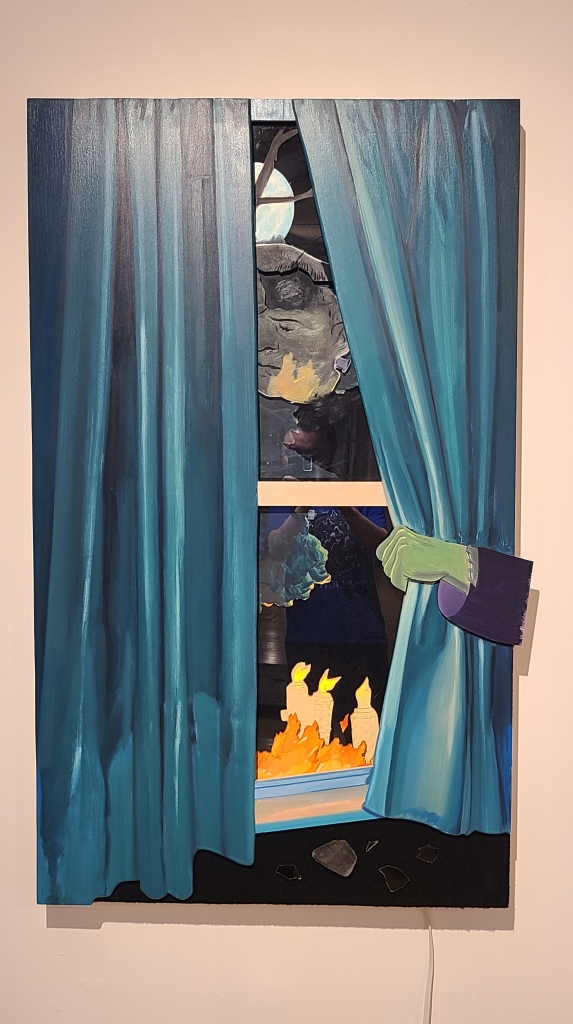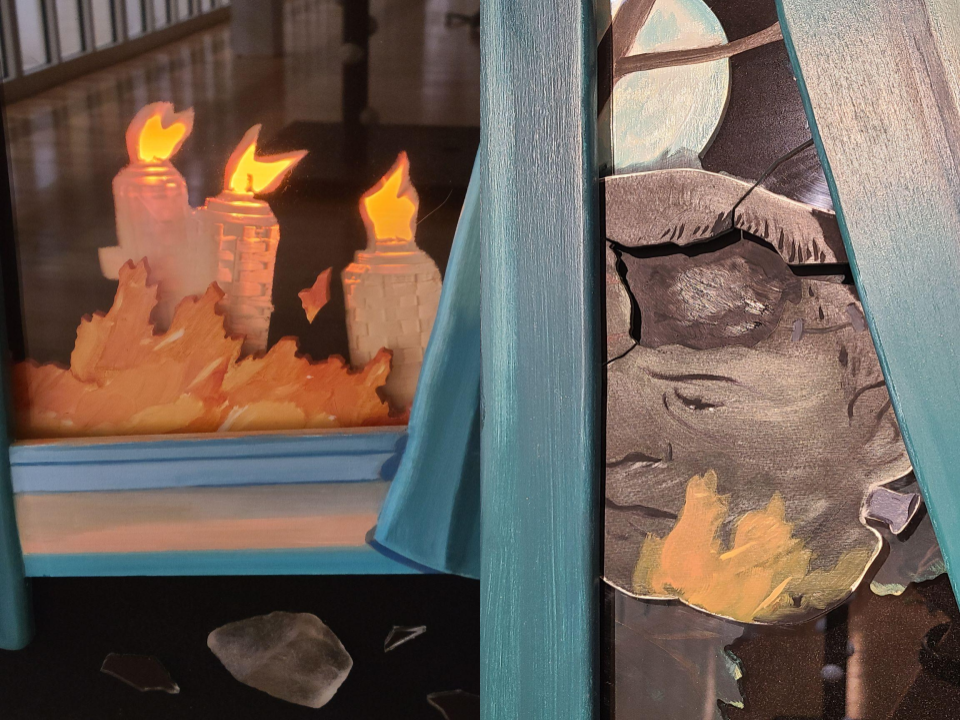James Williams II’s God Don’t Like Ugly, Racial Constructions and Mary Shelley’s Frankenstein
Posted: November 15, 2023 Filed under: Current Exhibition Leave a commentGod Don’t Like Ugly from October 10th to December 9th, 2023, at The Stamp Gallery | University of Maryland, College Park | Written by James Cho

The title of God Don’t Like Ugly is inspired by the way that Victor Frankenstein and the townspeople rejected Frankenstein’s monster due to his outward ugliness, which reflects on their much more hideous internal ugliness. When peeking around the curtain, viewers can observe how the monster has and continues to suffer at the hands of an angry mob. Even in the dead of night, he is chased due to his “otherness” with fire and brimstone, implied by the monster’s caved-in skull and tiki torches that loom behind him.
At the opening reception for Placeholder, Williams expanded upon this scene. Much like in Mary Shelley’s Frankenstein, in which the narrator Victor Frankenstein wanted to create a beautiful new race of man but from his perspective creates a monster instead, Williams draws parallels to the formation of the black-white binary in the US. Williams uses the story of Frankenstein and his monster as a “placeholder” for America and its creation of a black identity as the antithesis to whiteness in God Don’t Like Ugly.
Namely, Williams describes the construct of a black identity as an economic tool for the US. Like Victor, white Americans used the social construct of race to “other” black people and minorities like Native Americans for economic gain through slavery and forced labour. This abuse of blackness is reflected in God Don’t Like Ugly, specifically in the implied violence of the rock that shattered the window and Frankenstein’s monster’s head, and the angry mob wielding tiki torches behind him. Much like during slavery and Jim Crow, when white supremacists would throw bricks at black churches, burn crosses, and perform lynchings, among other atrocities to threaten black people, the monster—whose skin is also non-white—has experienced abuse and hate, as seen in Williams’ piece. And in the same way that Frankenstein’s hand is stretching out to us viewers, Williams is inviting us to look at this piece to understand what it’s like to be a black individual living within the confines of the social construction of race in America.

In my talks with Williams during the opening reception, he mentioned that he wanted to focus on the simpler message of race through the analogy of Frankenstein’s monster and blackness. However, I also saw one between the America that he described and Victor Frankenstein. Specifically, there is a direct parallel between how blackness as a construct led to the horrific deaths and suffering of black people and Victor’s inaction. In Frankenstein (1818), Victor’s abandonment of his creation despite it having practically been a newborn baby led to it killing his brother William. This leads to the death of his adoptive sister Justine, since she was framed and executed for the murder of William. All because Victor wasn’t willing to admit that his monster killed William out of revenge for being forced into a life where he had only experienced pain and hate for his appearance. Like Victor, many in America were and in some cases are still unwilling to admit to having been proponents of the construct of race that brought about the deaths, separation, and suffering of so many.
Altogether, James William II’s God Don’t Like Ugly presents a deeply thought-provoking and inspired piece in God Don’t Like Ugly that we should dwell on when thinking about the historical and contemporary impacts of race as a social construction.
